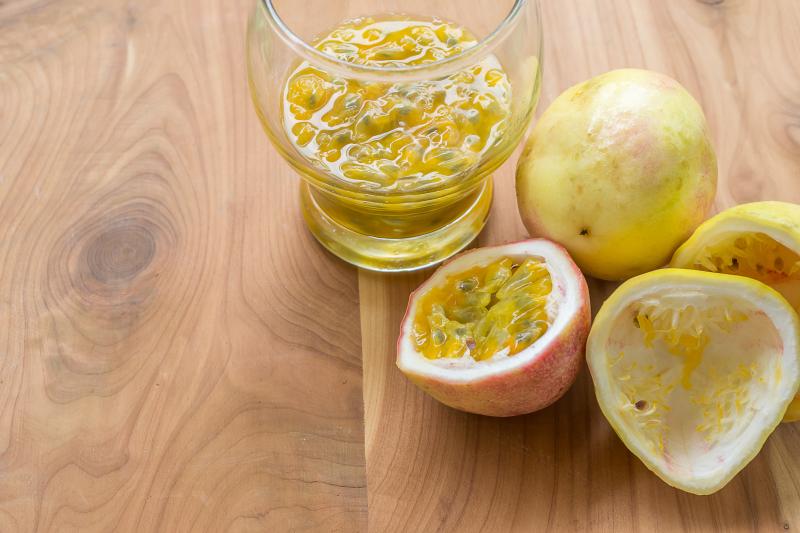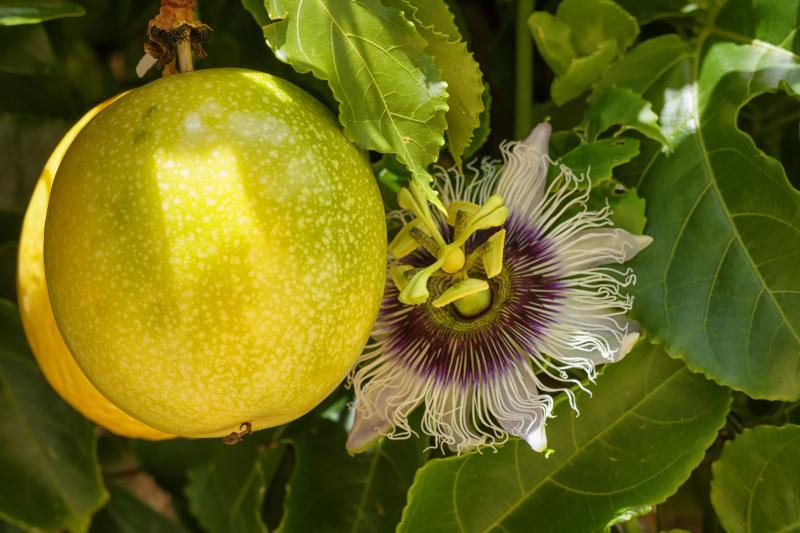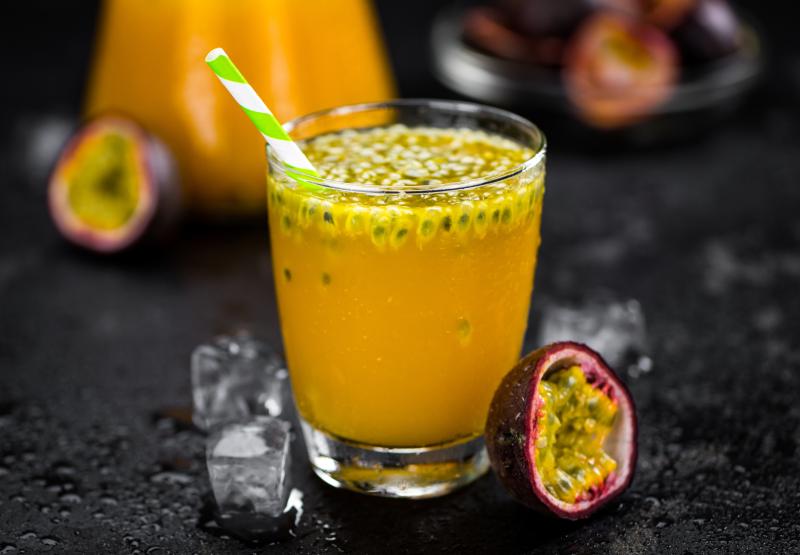I’ve always been intrigued by the passion fruit’s deceptive appearance; it’s incredibly ugly on the outside, but break it open, and you’re rewarded with a taste that’s absolutely divine.
The contrast between its rough exterior and the vibrant, juicy interior never fails to amaze me.

However, its tangy acidity, while part of its charm, is something I’ve learned to enjoy in moderation, especially with my sensitive stomach in mind.
This unique blend of beauty and acidity in passion fruit leads us into a deeper exploration of what makes this fruit so captivating yet potentially challenging for some.
Highlights
- Passion fruit boasts a pH level around 3, similar to lemons and more acidic than oranges and pineapples, making it a standout choice for adding a tangy zest to culinary creations.
- It is a potent source of antioxidants, particularly vitamin C and beta-carotene, which help combat free radicals and support overall health.
- Maracuja, containing the sedative compound passiflorine, is traditionally used to ease insomnia and anxiety due to its calming properties.
In this article:
From Tropical Vines to Global Tables
Passiflora edulis, passion fruit or maracuja discovered in the 16th century, thrives in the tropics, climbing with zeal on sprawling vines.

Its arrival in Europe was met with curiosity; people were fascinated by its exotic taste and began incorporating it into various dishes, marking the beginning of its global culinary journey.
In South American cuisine, especially in Brazil, passion fruit is indispensable. It’s celebrated for adding a tangy zest to drinks, desserts, and savory dishes like ceviche, where its acidity beautifully complements seafood.

Today, passion fruit has made its mark worldwide, beloved for its unique flavor that enhances both sweet and savory creations, symbolizing a blend of tradition and innovation in the culinary world.
Is Passion Fruit Acidic?
Oh, yes, passion fruit is indeed acidic! That zesty kick and tropical tang come from its natural acidity.
Picture this: the pH level of passion fruit sits around 3 for both the vibrant yellow and the deep purple varieties.
This places it squarely in the acidic zone, much like the sharpness you find in lemons, which also sport a pH around 2 to 3.
This means if lemons have ever given you a bit of trouble, passion fruit might do the same, especially for those navigating the ups and downs of GERD.
So, while it’s a deliciously tempting fruit, it’s good to enjoy it mindfully if you’re sensitive to acidic foods.
What Gives Passion Fruit its Zesty Kick?

What exactly makes passion fruit acidic? Let’s have a look:
1. Acids in Passion Fruit
Ever wonder what gives passion fruit its signature tang, and why it might be a concern for those with acid reflux?
The answer lies in its unique blend of acids. Citric acid, a natural preservative, not only contributes to its sour taste but might also pose a challenge for sensitive stomachs.
Then there’s malic acid, familiar for adding tartness to apples, which plays a similar role in passion fruit.
These acids, while key to the fruit’s deliciously sharp flavor, are also why those with acid reflux might need to tread carefully.
2. Ripeness and Variety
First off, the acidity of passion fruit can vary depending on its ripeness and the specific variety.
Generally, passion fruits come in two main types: the purple variety, which is slightly sweeter, and the yellow variety, known for its higher acidity.
As passion fruits ripen, their acidity decreases slightly, making them sweeter. However, even at their ripest, passion fruits maintain a notable level of acidity.
3. Conditions in which the Fruit is Grown
Most of the passion fruit found in the U.S. market comes from warmer regions like South America, Central America, and parts of the United States, such as Florida and California.
Each of these places has its own unique soil composition and climate conditions, contributing to slight variations in the fruit’s acidity.
Nutritional Content of Passion Fruit

Let’s uncover how much nutritional goodness is crammed into just one single passion fruit weighing around 20 grams (pulp and seeds):
- Holds about 5.4 milligrams of Vitamin C, covering 6% of the daily value for men (90 mg/day) and 7% for women (75 mg/day).
- Provides approximately 2.1% of the daily potassium requirement for an adult, based on an average RDI of 3000 mg.
- The calorie content of one passion fruit is relatively small, typically ranging from 17 to 25calories.
- With a touch of dietary fiber, it subtly supports a happy gut and aids in maintaining a healthy weight.
Tips for Incorporating Passion Fruit into a Low-Acidity Diet

Tempting as it might be to spike your Caipirinha with passion fruit for that Vitamin C kick (a cheeky move that might not sit well with your reflux!), there are indeed wiser, gentler ways to enjoy this acidic delight.
To weave passion fruit into a low-acidity diet without stirring up any digestive drama, here are a few practical tips:
- Introduce passion fruit into your diet through smooth companions like yogurts or smoothies. The creamy texture of dairy or dairy alternatives can help neutralize some of the fruit’s acidity, making it easier on your stomach.
- If straight-up passion fruit is too intense, try diluting its juice with water or mix it into fruit salads where its acidity can be balanced by sweeter fruits.
- Passion fruit is potent in taste, so a little goes a long way. Start with small amounts to gauge how your body reacts.
- Everyone’s digestive system reacts differently. Pay close attention to how your body responds to passion fruit and adjust your intake accordingly.
- Especially for those managing GERD or other digestive issues, consulting with a healthcare provider or dietitian is key. They can help identify your specific triggers and craft a diet plan that includes passion fruit in a way that’s safe and enjoyable for you.
Final Thoughts
As someone deeply immersed in the culinary arts, the tangy zest of passion fruit, akin to that of lemons, has become a secret weapon in my kitchen, elevating dishes with its bright and bold flavor.
Yet, my exploration has also made me mindful of its impact on those with sensitive stomachs, reminding me of the delicate balance required in savoring its benefits.
The acidity that makes passion fruit so captivating in recipes also underscores the importance of moderation and consideration, especially for individuals navigating dietary sensitivities.
While I celebrate the dynamic flavors and health advantages this fruit brings to the table, I’m also reminded to approach its consumption with care, ensuring that everyone can enjoy the wonders of passion fruit without discomfort.